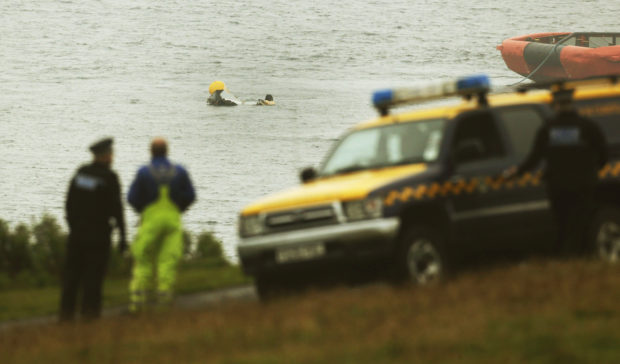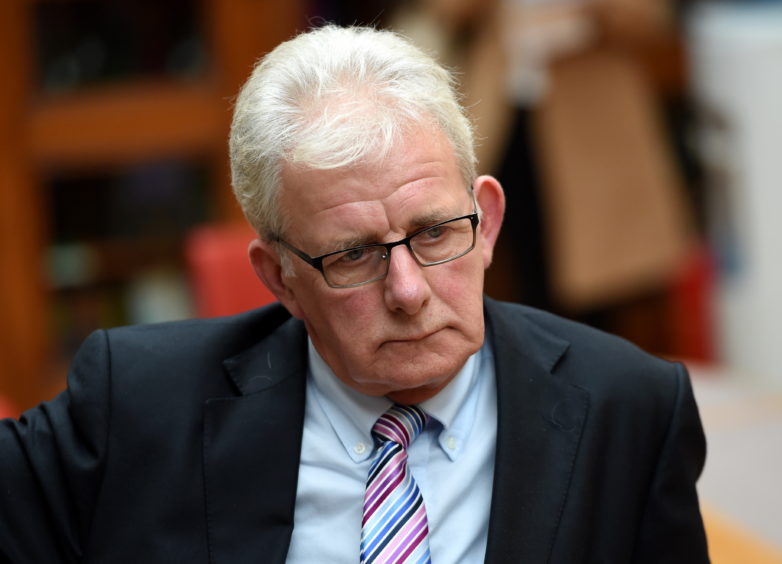Helicopter safety guidance was a decade behind the commercial airline industry at the time of the fatal crash off Shetland, a top aerospace engineer has claimed.
The revelation was made yesterday by one of the senior engineers for AirBus, the international company that designed the Super Puma copter involved in the 2013 tragedy.
The aircraft plummeted in to the sea just under two miles west of Sumburgh Airport on August 23, 2013. Four offshore workers died on the day, while a fifth victim committed suicide four years later.
The helicopter operators, CHC Scotia Ltd, has since updated its standard operating procedures (SOPs) relating to landing approaches, the inquiry heard.
It now includes advice on landing approaches similar to those identified in the Shetland tragedy – giving particular information about speed and height in particular scenarios.
The Air Accidents Investigation Branch (AAIB) said flight instruments were “not monitored effectively” by the pilots in the moments leading up to the crash.
The AAIB said a lack of monitoring meant a reduction in air speed was not noticed by the pilots and attempts to recover control were made too late.
Thomas Gogel told the inquiry he is employed as an aerospace engineer in control of “product safety enhancement” in the air industry.
- October 20, 2020
- October 20, 2020
- October 19, 2020
- September 14, 2020
- September 11, 2020
- September 10, 2020
He said the flight crew operating manual (FCOM) had been enhanced since the tragedy, adding: “From here on it will become standard for all helicopters in the offshore industry.”
He said there was no particular FCOM for the L2 model of the Super Puma which was involved in the accident.
Mr Gogel said: “It was already used in the fixed wing aircraft. The big fixed wing world is 10 years ahead of the helicopter industry.”
He described how the helicopter industry not only involved the offshore industry but also police missions, medical and fire copter call-outs – which all varied in their use.
Mr Gogel said AirBus decided to “overhaul” the system, adding: “It was ground-breaking for the helicopter industry.
He stated that the new FCOM had become “industry standard” and included issues raised within the AAIB report about autopilot, and height and speed warnings.
He added: “We are convinced it is helpful for the industry. It is now issued as standard for all AirBus helicopters, including those newly manufactured – for every transport offshore.
“The FCOM is for every offshore passenger transfer.”
The helicopter pilot’s final words prior to the crash were also revealed during the sixth day of the hearing.
A flight simulation of the approach was shown to a fatal accident inquiry, being heard virtually before Sheriff Derek Pyle.
The nine-minute simulated reconstruction of the approach into Sumburgh featured some cockpit instrumentation and was synchronised with a transcript of the dialogue from the pilot and co-pilot.
The transcript of pilot Martin Miglans’s words detailed that he said “wow, what’s going on here” in the moments before the incident.
He then said: “Wow. Wow. Wow, oh no, oh no, no no no.”
The inquiry also heard yesterday that Mr Miglans had flown into Sumburgh 28 times in the year before the crash.
The fatal accident inquiry – being held virtually – is hearing evidence into the tragic circumstances of the Super Puma helicopter crash off Shetland on August 23, 2013.
Highlands and Islands Sheriff Principal Derek Pyle, who is conducting the inquiry, opened the session last Monday.
Video conferencing technology is being used during the hearing due to Covid-19 restrictions in place throughout courts across Scotland.
The passengers who died on the day were: Sarah Darnley, 45, of Elgin; Gary McCrossan, 59, of Inverness; Duncan Munro, 46, of Bishop Auckland; and 57-year-old George Allison, of Winchester.
A fifth victim, Samuel Bell, from the London area, committed suicide four years later.
The inquiry was told that he had attempted to save the life of another passenger, Mr McCrossan, after he had managed to escape from the submerged helicopter fuselage.
Sheriff Principal Derek Pyle said: “His death was clearly directly caused by the accident.”
The inquiry is hearing evidence from from survivors, counsel for families, the Civil Aviation Authority, helicopter operator CHC, and plane manufacturer AirBus.
The victims were offshore workers travelling onboard a Eurocopter AS332 Super Puma helicopter belonging to CHC Helicopters when it crashed on approach to Sumburgh Airport on August 23, 2013.
The aircraft had two pilots and 16 passengers. It was flying workers off the Borgsten Dolphin oil platform in the North Sea to Aberdeen, but was stopping at Shetland to refuel.
The inquiry is expected to last four weeks.

